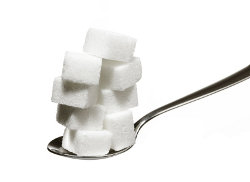Signs That You May Be Addicted to Sugar

Whether or not you can really be “addicted” to sugar like you can to drugs and alcohol is still being debated among experts. However, a secondary definition of addiction describes “the persistent, compulsive use of a substance that is known to be harmful.” That would certainly describe the relationship that many people have with refined cane sugar. They know that ingesting large amounts of sugar isn’t good for them, but they can’t seem to stop themselves from eating it anyway.
If you have done this too and you worry that you might have a sugar addiction, take a look at the following common signs and symptoms: Sugar cravings at consistent times
Do you always get cravings for sugar around the same time each day? For example, in mid-afternoon, or in the evening a couple of hours after dinner? It’s possible that you have come to depend on sugar to help boost your energy or soothe emotional slumps at those specific times of day.
Sugar cravings all day long
Maybe your sugar cravings are even stronger and you spend a large portion of your day thinking about sugar and craving it. Do you ever get a spontaneous, intense urge to eat something sweet? Do you insist on drinking your coffee or tea very sweet? Do you drink a lot of soda or fruit juice all day long? If any of these describe your daily habits, it’s very likely that you have a dependence on sugar.
Persistent sweet tooth
When you are at a party or other social event, do you usually gravitate toward the sweet foods more than healthier choices? Do you have trouble resisting dessert after dinner? This is different than simply liking sweet treats; most of us do like sweets. But if you have trouble turning them down, that usually means an addiction is present.
See: 7 Healthy Snacks to Satisfy Your Sweet Tooth
Discomfort when cutting back
Finally, one of the clearest signs of sugar addiction is that you feel incredibly uncomfortable when you try to cut back your sugar intake. You may experience uncomfortable sensations like nausea, fatigue, headaches, irritability, anxiety, and moodiness - these are all withdrawal symptoms, which simply means that your body is craving a substance it is used to having.
The good news is, once you get off the “sugar roller coaster” these symptoms begin to fade and it gets easier each day to remain sugar free.
In fact, it’s important to remember that giving in and eating sugar to soothe unpleasant withdrawal symptoms will only create stronger cravings later! The more sugar you eat, the more sugar you will want to eat. That alone is a good enough reason to push through the discomfort, and you’ll enjoy fewer cravings as time goes on.
Must Read3 Ways to Reduce Sugar Cravings
How to Eliminate Your Craving for Sweets
Calories in Sugar
